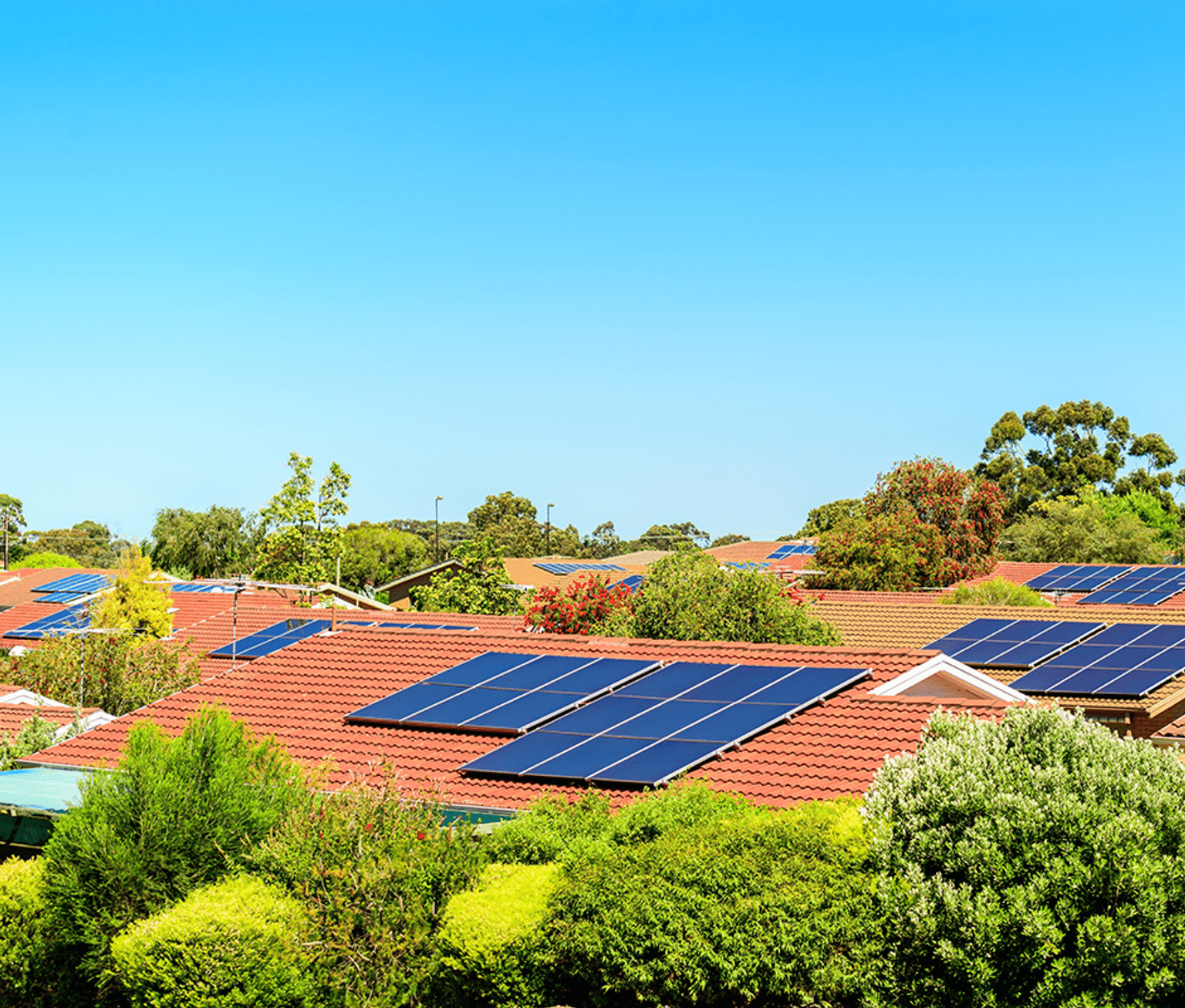What size battery do I need?
Choosing the right battery size for your needs will mostly depend on the size of your solar electricity system, how much energy you typically consume overnight and whether you want backup during a power outage.
To save the most on electricity bills it is generally best to buy a battery that you will regularly charge and discharge to the recommended level. You want to be able to store any excess solar electricity generated each day and ensure that the majority of that stored energy is used later on.
At the same time, it is wise not to overuse a battery, for example by fully charging and discharging two or three times a day. Doing this might shorten its lifespan.
You can usually set this up in an Energy Management System or similar app that helps to optimise the system.
You should also consider any changes you might want to make further down the track, such as switching from gas hot water to electric heat pump, for example, or adding more PV panels in the future to cover the needs of a growing family.
The best way to choose the right battery for your needs and budget is to get an independent assessment from an energy expert or accredited installer or supplier. Renew’s advice services can help with determining system size and the payback time.

Solar batteries: What you need to know about backup power
Solar PV and battery systems can provide stored energy when the power is out if they are designed with backup power.
Planning upgrades or system expansion
Some battery systems are modular, allowing you the option to increase your system’s capacity later, for example, when your energy use increases or when funds become available. This is typically harder in a DC-coupled arrangement. The ability of your existing battery to be upgraded needs to be confirmed with your installer prior to purchase.
Designing a system that provides backup during a power outage
A home battery system can be designed to provide backup during a power outage, however, not all storage systems are designed to provide energy when the grid is down, and this may depend on the storage system, the system design and inverter used.
Your installer will be able to provide you with more guidance; just make it clear what your requirements are when looking for a system.
A pre-approval from your Distribution Network Service Provider is an eligibility requirement for a battery rebate to ensure that the battery can be safely connected to the network.
Unfortunately, not every household may be able to receive a pre-approval for various reasons; including the strength of the local grid. It is also possible connections approval provided by the DNSP are subject to export constraints. The Victorian Distribution Code regulates the distribution and connection of electricity to customers, and safety of community is a key priority.
Planning a system that is Virtual Power Plant ready
All batteries on Solar Victoria’s products list are aggregation and VPP ready and comply to Australian Energy Market Operator’s (AEMO) minimum specifications. This is to enable your household to participate in Virtual Power Plant Trials, where many households are linked via cloud-based systems to work like a small power station.
Benefits of participating in aggregation projects or a VPP program
- receive compensation for sharing your stored solar energy with the VPP network
- make the most of the solar power you generate
- balance the supply and demand of energy for fewer disruptions
- reduce network costs for all Victorians
- increase grid resilience
- enable greater uptake of Distributed Energy Resources (DER)
Most aggregation and VPP programs have specific product requirements, so you will need to review these to ensure the system you are installing is capable of participating in the VPP you want to participate in.
Your system needs certain features to be aggregation and VPP-ready, including:

Solar assessment calculator for your home
Use this solar calculator for a free and independent assessment of the best size solar system for your home, plus an estimate of the cost and your potential bill savings.
Siting considerations
Most home batteries can be installed outdoors, however, their lifespans will be improved by a stable, cool temperature, so try not to locate them in direct sun or in an uninsulated, unshaded metal shed.
It’s also important to make sure that any enclosure is vermin-proofed, cannot be accessed by children and displays appropriate signs relating to safety, warnings and shutdown procedures.
Installation and safety considerations
- Like most electrical equipment, batteries are generally safe if they are installed correctly.
- Make sure there is appropriate space around the battery unit and position the battery away from any potential hazards.
- It’s important not to store heavy household equipment on top of a battery and keep the area clear of obstacles.
- Note that batteries cannot be installed in domestic habitable rooms in Australia as required by regulatory safety standards, including Australian Standard AS/NZ 5139 2019.
- Don’t put flammable objects or those that could conduct electricity in or on the battery enclosure.
- Make sure the battery is maintained according to the guidelines given by your installer.
- The safety risks associated with actual cell chemistries differ depending on the chemistry. Discuss any potential risks with your installer so they can be mitigated.
- Your CEC-accredited installer will be aware of these installation standards. These guidelines are discussed further in Section 7 Finding the right retailer.
Insurance
Solar panels and batteries are high value items so include them in your home insurance policy and check any insurance clauses and requirements for solar battery related issues prior to installation.

Solar battery loans
Solar Victoria is no longer taking applications for interest-free loans for the installation of a solar battery system.
Updated

